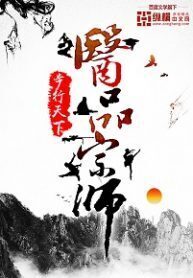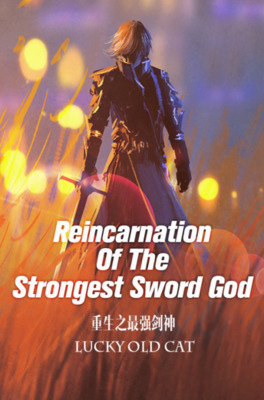Chapter 231 Cavalry
Similar problems also exist in the direction of Volokolamsk.
The 16th Army attacked the villages of Skirmanovo and Kozvo at the same time. Among them, the 4th Tank Brigade and the 50th Cavalry Division were responsible for attacking Skirmano Village, while the 27th Tank Brigade and the 44th Cavalry Division were in charge. Attack Kozwo Village.
The tragedy happened in the direction of Kozwo Village.
There is a hill more than 100 meters high in front of Kozwo Village. The German army has an observation post of a heavy artillery battalion on this hill. Three kilometers in front of it is an open field, and further east is the edge of a forest.
The judgment made by the Supreme Command on this terrain is...the woods are suitable for cavalry and tanks to ambush, and the open land is suitable for their charge. As long as the artillery fire passes, the cavalry and tanks can rush past the German positions like a tide and submerge them.
If this idea could still be established in World War I, the cavalry could penetrate the defense quickly when the enemy's firepower density was insufficient, but in World War II, when artillery, machine guns, and tanks were already very common, the opponent was the German army with good coordination ability... It is a This is a very dangerous and even suicidal tactic.
After a burst of heavy shelling, Major Leohard, the commander of the German 30th Infantry Battalion, realized that the Russians would attack his line of defense, so he immediately ordered the soldiers to prepare for battle, and at the same time let the adjutant and the heavy battalion get in touch.
"Russian tanks!" Someone shouted, and the Russian shelling had not stopped at this time.
Major Leohard raised his binoculars and looked towards the forest. Sure enough, he saw several tanks slowly coming out from the edge of the forest.
"It's a T34!" Major Leohard couldn't help being taken aback. He knew that this kind of tank was difficult to deal with, and the anti-tank guns in their hands could only penetrate it at close range.
But then he let go of half of his hanging heart... Only the five tanks in front were T34, and the large number of tanks following were all T26.
Oddly, these tanks were not accompanied by infantry.
"What's going on?" Major Leohard asked the adjutant.
"Look there, Major!" The adjutant who was also holding a binoculars pointed to the right wing: "The right side of the forest, cavalry!"
"Cavalry?" Major Leohard was puzzled for a while. He had never seen this kind of tactic before. It was not infantry but cavalry that coordinated with tanks.
It is said that this was an attempt by the Soviet Supreme Command. They believed that the infantry could not keep up with the speed of the tanks during the charge, but the cavalry could, so the cavalry and tanks could rush to the enemy's line of defense at high speed.
What they didn't consider is...the coordination between infantry and tanks will indeed slow down the overall attack speed, but tanks can provide infantry with protection and firepower, and infantry can provide tanks with information and clear roadblocks, etc. This is a complementary coordination.
On the contrary, cavalry and tanks can indeed synchronize in speed, but they are actually different arms that are difficult to coordinate with each other, and they actually fight independently.
The Soviet cavalry is on the right side of the woods.
At the forefront is the scout team, and then an outpost of fifty cavalrymen, who are skilled in riding, because Major Leohard discovered that they could hold their horses and shoot while controlling the horses.
In a short while, there were more and more cavalry, and the number increased to thousands of people. They rushed out of the woods along a wide front, one team after another, and then charged towards the German defense line with strange screams in their mouths.
"Regiment-level cavalry charge!" Leohard immediately reported the situation to the artillery: "The distance is 2,500 yards!"
"2000 yards away!"
…
When Major Leohard reported to 1,500 yards, the whistle of shells rang in the air, and then the Russian cavalry unit, which was still majestic just now, immediately became a mess... The German army had 30 troops in 1941 A heavy artillery battalion equipped with 210MM caliber howitzers. This large-caliber howitzer is usually used to attack the Soviet defense line, because it has 6.57 tons and is not easy to maneuver. At the same time, the weight of the shells will also bring great pressure to logistics.
Of course, the German army at this time certainly can't care so much.
A shell exploded in the cavalry team. While the shell blasted a pit on the ground and stirred up a piece of mud, it also threw the horses and cavalry into the air and fell back to the ground heavily.
Screams, neighing of horses, gunshots and artillery can be heard endlessly.
But the Soviet cavalry did not stop charging. They galloped towards the German defense line one after another, braving artillery fire and bullet rain, but as round after round of shells exploded in the ranks, the cavalry and horses fell into pieces. Fell on the battlefield in pieces...
Cavalry is actually not suitable for modern warfare.
The reason is that they are too fragile, especially when the cavalry is still riding high on the horseback. The shrapnel exploded by the shells fly high in a radial pattern, which will multiply the casualty rate of the cavalry. They will be torn by the shrapnel on the horse. into pieces.
Even if the shrapnel hits the horse instead of the rider, or the horse is frightened or injured by the shock wave of the shell...the rider can be injured by this, and it is often fatal, even if they are cavalry who grew up riding horses.
Occasionally, a few cavalrymen were lucky enough to break through the German artillery blockade, but soon they fell into the mud under the fire of the German machine guns.
In a blink of an eye, the corpses of horses and riders were everywhere in front of the position, some were torn to pieces, and some were trampled on each other, injured or killed. Some surviving horses were scattered in the field, and they fled back to the woods or other directions away from the battlefield by virtue of their survival instincts. The wounded cavalry could only howl, struggle or try to escape on the battlefield.
Major Leohard is very wise to use the artillery to deal with the cavalry, because the cavalry is completely out of coordination when the tank is defeated.
In fact, even if there is cavalry, there is no coordination. To be exact, the tank will expose its right wing, that is, the side armor, to the German defense line. They were destroyed one by one. Even the first few T34s are no exception.
"The enemy's firepower is very fierce, and we can't break through their defense line!" Colonel Abram, the commander of the 27th Tank Brigade, reported to his superiors. He was not timid, but thought that another way should be used to attack.
But he was quickly disappointed.
A firm and stern tone came from the walkie-talkie: "You must break through and execute the order at all costs, otherwise you will be judged by the people!"
So, Colonel Abram could only continue to order the tanks and cavalry to continue to charge forward.
It took less than a week for the 27th Tank Brigade to go into battle from its establishment, and there were very few T34 tanks assigned to it. The T26 tanks could not withstand the firing of German anti-tank guns and heavy artillery.
In fact, even the T34 cannot do much without infantry coordination.
(end of this chapter)







